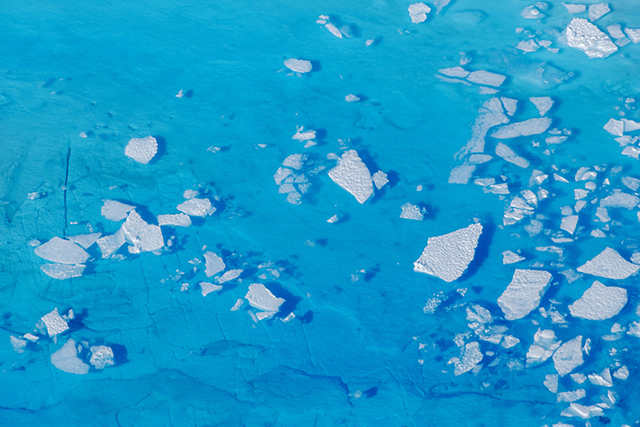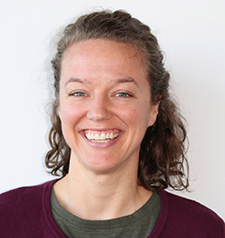
Chunks of ice float inside of meltwater pools on top of the Helheim glacier near Tasiilaq, Greenland.
There is overwhelming support from teachers, parents, and youth for incorporating climate change in K-12 education, as seen in recent surveys. Yet state education standards continue to lag behind.
In June, New Jersey became the first state to fully integrate climate change education in all subject areas and grade levels — a major accomplishment and only the beginning of climate change education’s journey into the public school system nationwide.
Education standards are developed at the state level, with specific curricula and lesson plans developed at the district and teacher level. When we look at the nation as a whole, climate change education is a patchwork across states and counties — with full integration in some areas and partial or no integration in others.
Often limited to science curriculum
Today, 44 states, representing 71% of U.S. students, have science education standards that include climate change in some form. Unfortunately, there is a misconception that climate change is only a science topic. We have learned that climate change education is best when taught across subjects, because the solutions to climate change are interdisciplinary and require knowledge and skills in geography, writing, art, and health in addition to science and technology.

Lindsey Kirkland
Minnesota’s science standards recently went through a revision process, and now include climate change, but the first time climate change overtly shows up is in sixth-grade Earth Science, and continues throughout the Earth Science strands in the standards for middle and high school grade levels. However, we have yet to see climate change show up in humanities, health or the arts.
Minnesota’s science standards also go one step further by asking teachers to include multiple “ways of knowing,” which is the method through which knowledge becomes apparent to a group of people. Historically, science has been the main method for people to learn about climate; however, we now know that climate change impacts and solutions demand our understanding of Indigenous ways of knowing (for example, Traditional Ecological Knowledge), environmental justice and anti-racism, and social and gender biases. Climate change solutions must incorporate the experiences of marginalized communities to progress our collective path forward, and provide examples of Black and brown faces doing research — faces that are critical to climate change solutions, yet those that are not represented by Western science.
So once a state’s standards have changed, how do teachers start integrating climate change education into their lesson plans? It’s not as easy as you may think.
Funding is often lacking
Funding is often lacking or deprioritized for teacher professional development around climate change education, which is an impediment to teachers receiving the full support they need to effectively integrate climate change education into their lesson plans.
Washington state has integrated climate change into its science curriculum and, in response, its legislature allocated $4 million for Climate Science Education to support teachers and community-based organizations throughout the state. This resulted in ClimeTime, a collaboration between school and community-based organizations that creates professional development opportunities mostly offered for free to teachers and funds grantees to create additional support material for teachers in the state of Washington.
In other states, legislative funds are still being argued about and withheld from educators, even after the education standards have changed.
This disconnect is where informal educators and community-based organizations are key.
Community education
Community-based organizations that focus on creating interdisciplinary climate change education resources and professional development opportunities provide support and guidance to teachers who want and need to teach about climate change.
For the past 15 years, Climate Generation: A Will Steger Legacy has offered a three-day institute to empower and equip teachers with the resources and information they need to effectively teach about the scientific and social solutions to climate change.
Next month, Climate Generation is partnering with National Oceanic and Atmospheric Administration (NOAA) and The Wild Center’s Youth Climate Program, to host the Stay-In-Stitute for Climate Change Education, a robust, virtual climate change education training for teachers across the nation on July 22-24.
Wondering what can you do to help?
If you are one of the millions of people who support the inclusion of climate change into your classrooms, submit resolutions to your school board or city council, make sure you vote for legislators who support climate initiatives, sign up to participate in your local standards revision process, and show support to your teachers through emails or donations to their trusted nonprofit organizations! Climate Generation has tools to help you take action.
Lindsey Kirkland supports climate change education programs for K-12 educators and public audiences as Climate Change Education Manager at Climate Generation: A Will Steger Legacy.
Article Credit: minnpost
